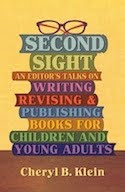But it is AMAZING: just astonishingly good writing with wise and painful things to say about writing, or being human, or pain and death, or reality, and/or the relationship among all of the above.
First, there is this excellent piece from a Magazine editor about why writers (himself especially) don't always follow through on ideas, and how this can be a mixed blessing. Its headline is a good writerly aphorism, even though you can only see the truth of it in retrospect: "Be Wrong as Fast as You Can."
Then, there is this extraordinary story about a young man who shot his girlfriend, then turned himself in; how her parents decided to forgive him, and have worked hard at that forgiveness, with his parents equally involved; and the process, restorative justice, that opens up new avenues of healing for the victims, and (it seems) both punishment and healing for the perpetrator.
Finally, there is this wonderful profile of the writer George Saunders, which pairs beautifully with the forgiveness story, actually: Because they are both about looking at the reality of the world and its pain, and choosing how to respond in a way that is both open to the pain and compassionate to others within it. My favorite quotes from the article:
I began to understand art as a kind of black box the reader enters. He enters in one state of mind and exits in another. The writer gets no points just because what's inside the box bears some linear resemblance to 'real life' -- he can put whatever he wants in there. What's important is that something undeniable and nontrivial happens to the reader between entry and exit.
If you have a negative tendency and you deny it, then you've doubled it. If you have a negative tendency and you look at it [which is, in part, what the process of writing allows] then the possibility exists that you can convert it.
You can find the astounding, heartbreaking short story referenced in the article,
"The Semplica-Girl Diaries," here at the
New Yorker, along with
an interview with Saunders about the story. And that interview (which you
must not read before you read the story!) has more wonderful gems:
Early on, a story’s meaning and rationale seem pretty obvious, but then,
as I write it, I realize that I know the meaning/rationale too well,
which means that the reader will also know it—and so things have to be
ramped up. Einstein said (or, at least, I am always quoting him as
having said), “No worthy problem is ever solved within the plane of its
original conception.” So this was an example of that: my “original
conception” (i.e., the dream and its associated meaning) had to be
outgrown—or built upon.
When something really bad is going on in a culture, the average guy
doesn’t see it. He can’t. He’s average. And is surrounded by and
immersed in the cant and discourse of the status quo. The average person
in the U.S., in, say, 1820, assumed white superiority, and, if he
happened to be against slavery, was for a gradual solution, which
probably involved sending all the slaves back to Africa, notwithstanding
the fact that most of them had never been there and were Americans in
every respect. And this would be the nice, moderate, urbane, educated
person of that time, who fancied himself “progressive.”
One thing I always feel in the midst of trying to talk coherently about a
story I’ve finished is that, you know, ninety per cent of it was
intuitive, done at-speed, for reasons I can’t quite articulate, except
in the “A felt better than B” way. All these choices add up, and make
the surface of the story, and, of course, the thematics and all that—but
I’m not usually thinking about any of that too much, or too overtly.
It’s more feeling than thinking—or a combination of the two, with feeling being in charge, and thinking sort of running around behind, making overly literal suggestions, and those feelings being sounded out and exercised and manifested via heavy editing and rewriting (as opposed to, say, planning and deciding).
The important part of the writing process, for me, is trying to make
choices that push the story in the most interesting direction, by which I
mean the direction that causes the story to give off the most light.
The story’s goal is to be fascinating and stimulating and irreducible;
the writer’s job is to micromanage the text to make this happen.
The artist’s job, I think, is to be a conduit for mystery. To intuit it,
and recognize that the story-germ has some inherent mystery in it, and
sort of midwife that mystery into the story in such a way that it isn’t
damaged in the process, and may even get heightened or refined.
If there is one thing I worry about most in the, um,
rigorous way I edit or teach plot, it is that too much thinking and too-intense questioning will kill that mystery for writers -- the feeling, the energy, the electric-fence emotion at its heart. And if there's one thing I look for in manuscripts, it's the ability to generate that mystery or emotion (which sometimes can be happy too, I hasten to say). If you can bring it, truly create it, make me weep as the forgiveness story did or feel both sorrowing and uplifted as "The Semplica- Girl Diaries" did . . . We need more people like you writing for children and young adults.









